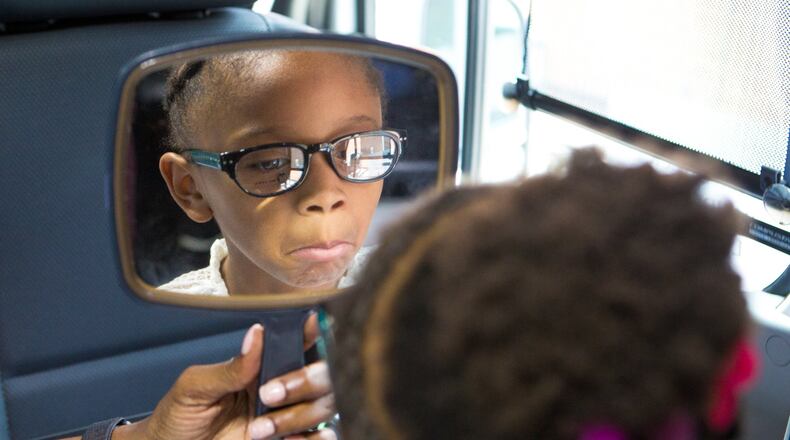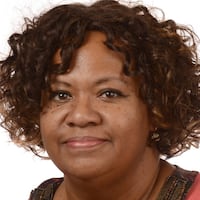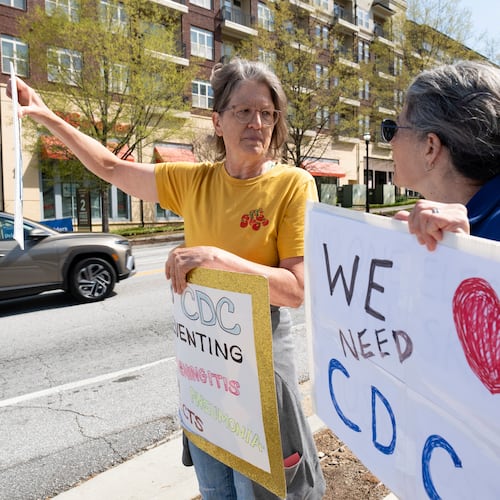Clothes, school supplies and haircuts are often at the top of the back-to-school list. But many parents don’t realize proper vision is a vital part of student success. A program marking its third year in Georgia aims to correct that, one pair of glasses at a time.
Vision to Learn was the brainchild of California philanthropist Austin Beutner. While deputy mayor of Los Angeles, he met with state education leaders and learned that many students struggled because they didn’t have glasses to see the board. Beutner was surprised that such an easy fix hadn’t been taken care of. In 2012, he and his wife, Virginia Beutner, bought a used mobile clinic from a hospital and staffed it with optometrists and other eye care professionals.
Since then Vision To Learn has spread to 13 states. In August 2017 it made its Peach State debut at Atlanta Public Schools with its first event at Michael Hollis Innovation Academy. It provided 49 pairs of glasses. In APS alone, an estimated 7,500 APS students need glasses; and in the larger metropolitan area, an estimated 60,000 children are in need.
The program has since grown to include DeKalb and Clayton county school districts during the school year. But when school is out of session, Vision to Learn takes the mobile clinic on the road to libraries, community centers, Boys & Girls clubs, and similar sites in areas not currently served, said Ayanna Browne-Magee,
Georgia Regional Director.
In partnership with The Atlanta Hawks, Chik-fil-A and Learn4Life, an education advocacy nonprofit, it does several community events around metro Atlanta.
A few years ago, it began working with the Cobb County Library system and then Gwinnett County Public Libraries.
Vision to Learn wrapped up its summer library program at Snellville Library on Friday, Aug. 2, by screening about 33 children.
Not every child screened needs glasses. Third-grader Aiden Crow and second-grader Coleton Baty didn’t need glasses after all.
Their mothers were relieved.
“His pediatrician was concerned that he may have vision problems. And I’ve noticed him squinting,” said Rebecca Baty. “But maybe it’s in the early stages. This lets me know that I should get him screened every year.”
Brittany Crow agreed. “He’s never really had his eyes checked and this was for prevention,” she said. “Everyone in our family wears glasses and we thought it may be time for him.”
Alexandria Jackson already had a pair but they’re broken, the Partee Elementary first-grader said shyly. Lucky for her, Vision to Learn understands kids and provides one replacement pair a year in case the glasses are lost or broken.
A 2013 study by the Mattel Children’s Hospital at UCLA showed the Vision To Learn model’s effectiveness. Of those surveyed, 92% of teachers and 90% of parents felt their students would not have received glasses without the access provided by Vision To Learn.
Parents interviewed for the study said getting glasses improved their kids’ life at home. And the statistics showed that math improved for all the students who got glasses.
In Snellville, optometrist Andre Whitehead manned the van with Stephanie Wilkes, a licensed optician. They both started their careers in traditional eye care retail offices, but find working with children rewarding.
“I got my first pair of glasses when I was 8 years old,” said Whitehead. “I didn’t know I had vision problems until I put them on and was able to really see the world for the first time. That’s what made me become an optometrist and that’s why I love working for Vision to Learn.”
MORE BACK TO SCHOOL STORIES
Vision to Learn by the numbers
Number of students helped to date: 229,516
Number of states: 13
Number of cities: 325
Number of school systems in Georgia: 3
Number of counties in Georgia: 5
Percentage of improvement in math (all students): 4%
Percentage of improvement in math (boys): 8%
Source: Vision to Learn
How to help
Vision to Learn relies on donations as well as corporate sponsorships and government funding. To learn more, go to visiontolearn.org.
About the Author
The Latest
Featured


